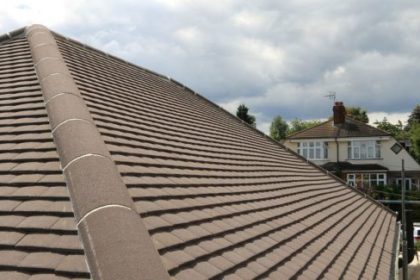 What Are the Most Common Causes of Roof Damage?
What Are the Most Common Causes of Roof Damage?
Whatever type of roof you may have, it has a lot to withstand — wind, rain and snow, extremes of heat and cold, and sometimes debris flying around. Inevitably, it can get damaged over the years and will need to be repaired. But what exactly might go wrong with your roof?
Damage to the Materials
Damage to the roofing materials is perhaps the most obvious thing that can happen to your roof. If it’s made from tiles or slate, for instance, they can be cracked if something heavy hits it — a tree branch breaking off and falling on your roof, for instance. This is one of several reasons to make sure no trees are growing close to your house.
More common, though, is for tiles or slates to be cracked or displaced by ice. Because water expands when it freezes, it can exploit any slight irregularity or hairline crack to widen the cavity. It also weakens the tile’s fastening, and whole tiles or slates can blow off the roof, leaving a gap. Any of these conditions will allow water to get in underneath the roof and seep down into your loft space, creating damp, mould and mildew throughout your home.
Felt roofs don’t need anything as heavy as a branch to damage them. Twigs blown around in high winds can create tears in the material, which will also let water in.
Damage to the Flashing
Besides the primary roofing materials, roof flashing can also be damaged. This consists of strips of metal (often lead or aluminium) that seal any gaps where a chimney-stack or similar structure comes out of the roof.
The flashing can be damaged or pulled away from the masonry. This will allow the rain to get through, with the same effects as rain getting through cracked or missing tiles.
Moss Covering on the Roof
A moss-covered roof may look charming and antique, but it’s actually damaging the roofing materials. This is because it’s very good at trapping water, making it heavier. If the weight is enough to crack the tiles or other materials, the trapped water can then seep down into the roof space.
Damage to the Guttering
Besides the roof covering and flashing, the other crucial component of your roof is the guttering — the gutters around the edge, which trap the run-off water, and the downpipes that direct it harmlessly into the drains.
Unfortunately, the gutters can get clogged up, especially in autumn, with leaves, twigs and other debris blown in the wind making the water overflow. At the same time, any joint in the system can spring a leak. Overflowing or leaking water can make the walls damp or even get into the foundations.
Any of this damage needs to be addressed as soon as possible, to avoid your home being infested by damp — or even worse problems. Give us a ring to find out how we can help.









